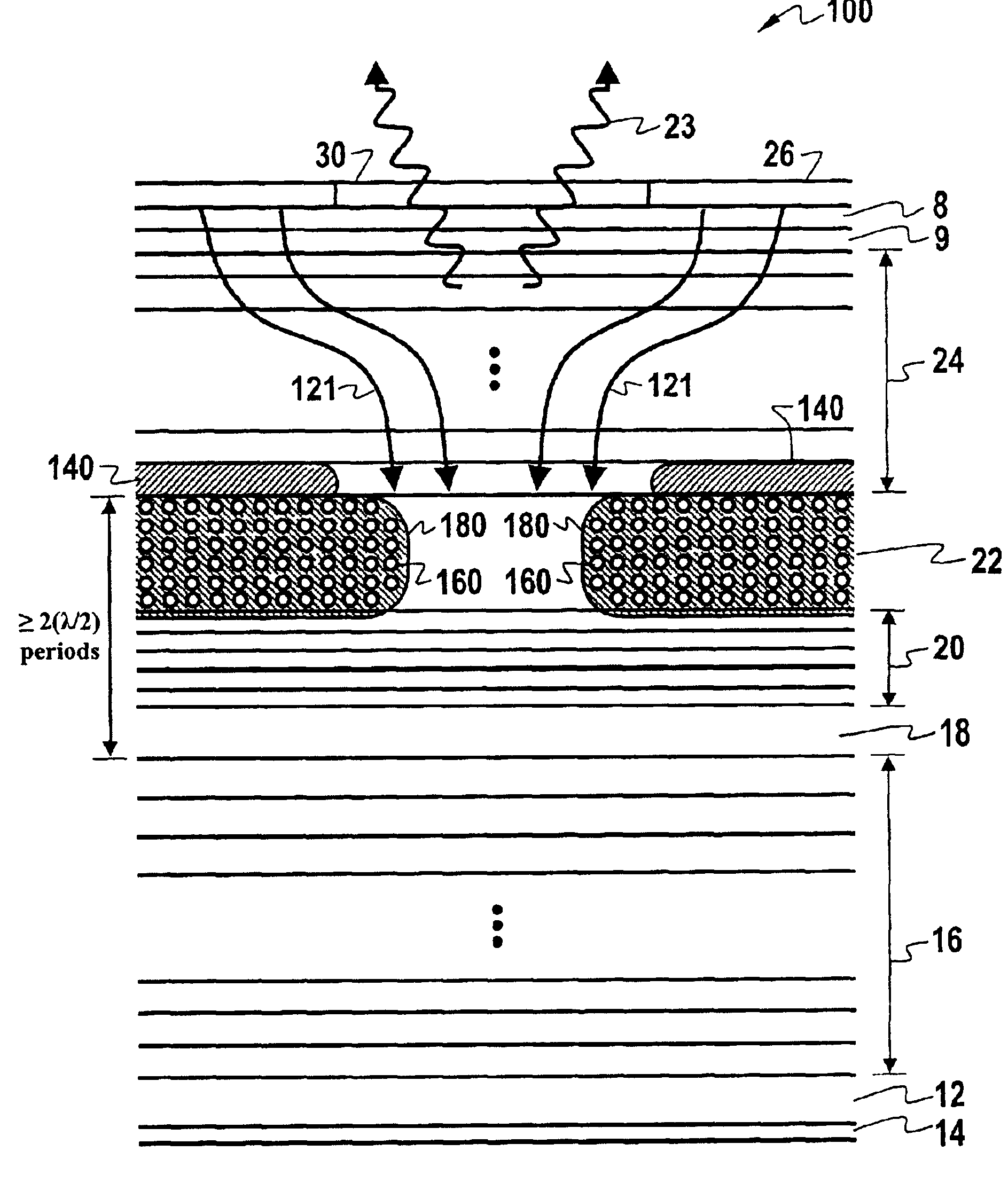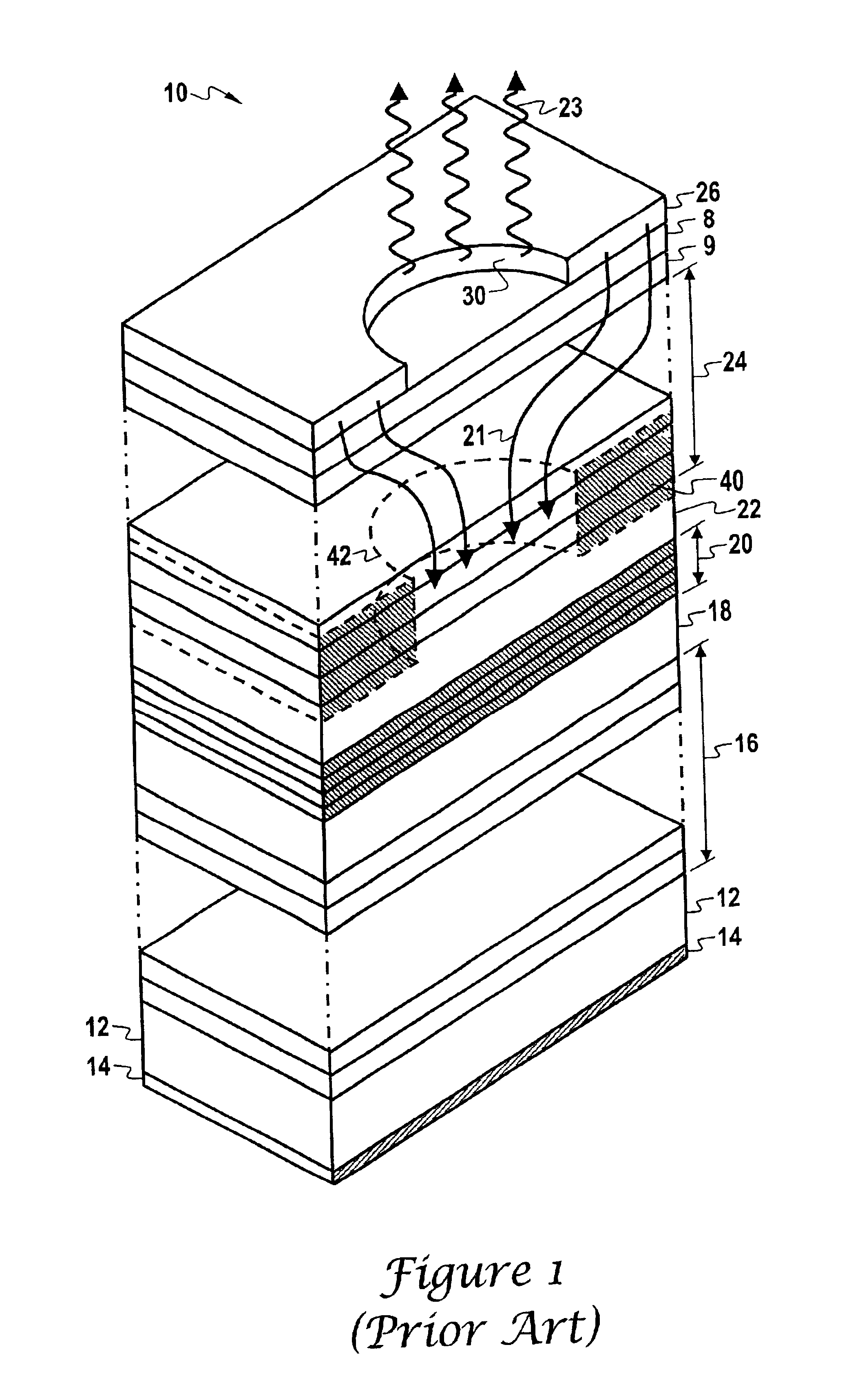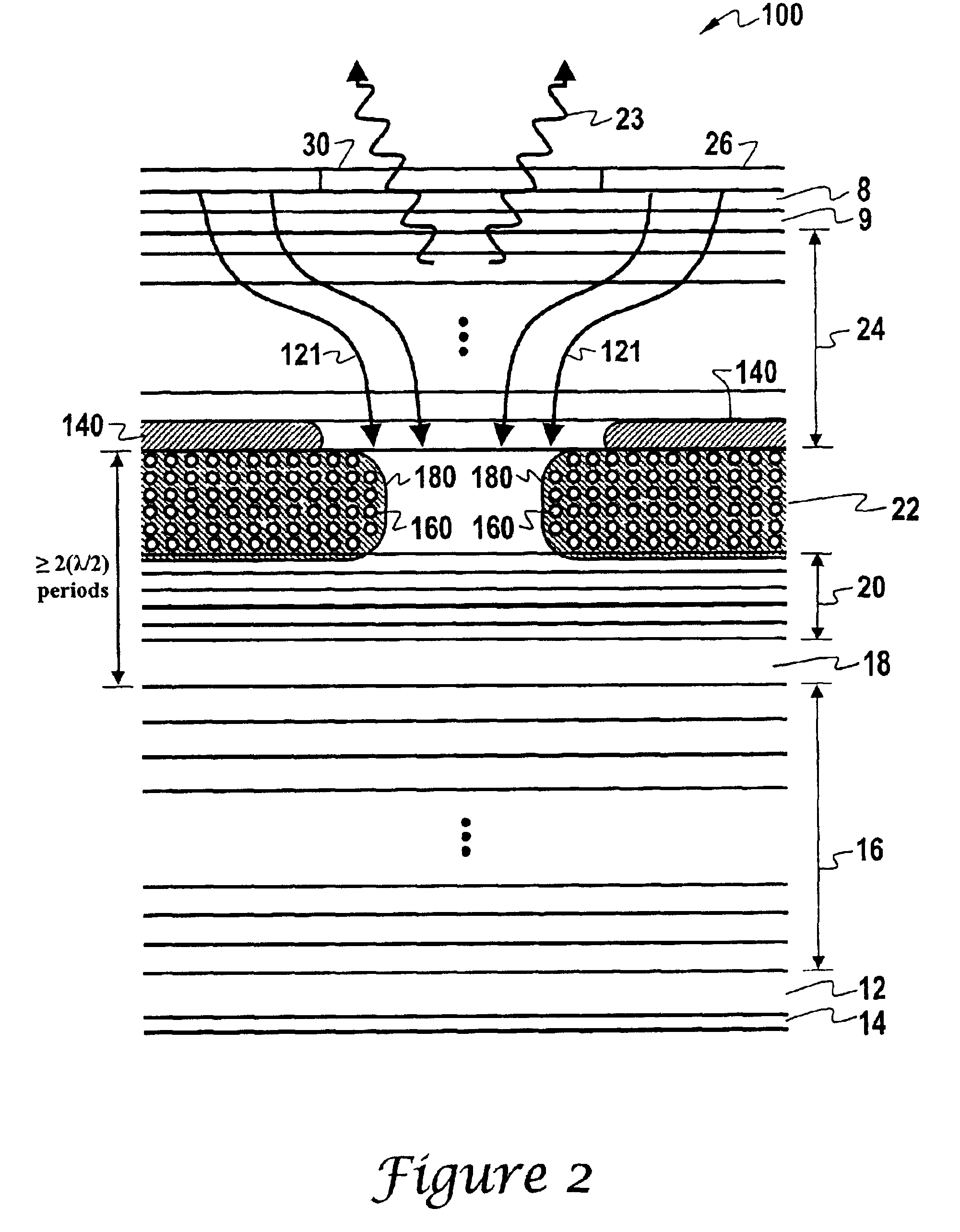Vertical cavity surface emitting laser having a gain guide aperture interior to an oxide confinement layer
a laser and gain guide technology, applied in semiconductor lasers, laser details, optical resonator shape and construction, etc., can solve the problems of low threshold, inability to produce significant optical guiding, and inability to achieve significant optical guiding by ion implantation. achieve the effect of low threshold and high efficiency
- Summary
- Abstract
- Description
- Claims
- Application Information
AI Technical Summary
Benefits of technology
Problems solved by technology
Method used
Image
Examples
Embodiment Construction
[0026]The principles of the present invention provide for a VCSEL that uses a current confinement structure comprised of an oxide structure and an interior gain guide ion implant structure. An example of such a VCSEL is the VCSEL 100 illustrated in FIG. 2. FIG. 2 should be understood as a “cut-away” schematic depiction of layers of a VCSEL that is generally configured as shown in FIG. 1. Thus, the same element numbers will be used for similar elements in FIG. 2 that were used in FIG 1.
[0027]Although for clarity our description of the illustrated embodiment assumes a VCSEL with mirrors and active region based on the AlGaAs material system, the invention broadly applies to VCSELs using any commensurate material system, such as AlGaAs mirrors and AlGaInP / GaAs active region for 670 nm, or AlGaInAs / InP mirrors and AlGaInAs active region for 1550 nm.
[0028]As shown in FIG. 2, the VCSEL 100 includes an n-doped gallium arsenide (GaAS) substrate 12 having an n-type electrical contact 14. An n...
PUM
 Login to View More
Login to View More Abstract
Description
Claims
Application Information
 Login to View More
Login to View More - R&D
- Intellectual Property
- Life Sciences
- Materials
- Tech Scout
- Unparalleled Data Quality
- Higher Quality Content
- 60% Fewer Hallucinations
Browse by: Latest US Patents, China's latest patents, Technical Efficacy Thesaurus, Application Domain, Technology Topic, Popular Technical Reports.
© 2025 PatSnap. All rights reserved.Legal|Privacy policy|Modern Slavery Act Transparency Statement|Sitemap|About US| Contact US: help@patsnap.com



